Birthmarks
Although rare, some birthmarks can evolve into potentially dangerous lesions, such as skin cancer. For this reason, a timely and professional assessment is crucial. Pinnacle Dermatology's team of expert dermatologists is dedicated to providing thorough evaluations to detect any worrisome changes early. This early detection is vital as it allows for the prompt and appropriate intervention, ensuring the best possible outcome for the patient.
By choosing Pinnacle Dermatology, you are entrusting your skin health to a team of professionals committed to comprehensive care and vigilant monitoring, ensuring any concerns are addressed swiftly and effectively.
Examples of Birthmarks
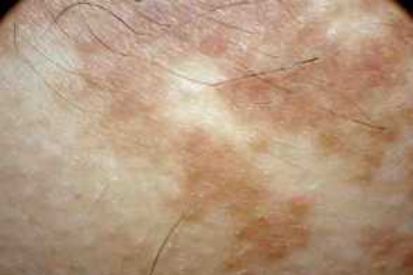
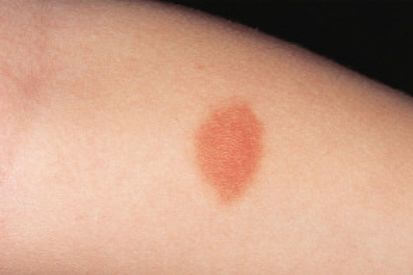
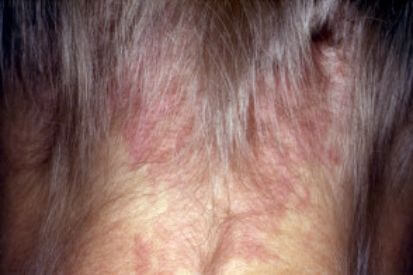
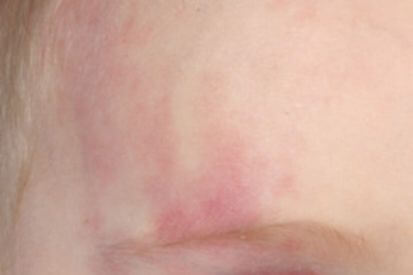
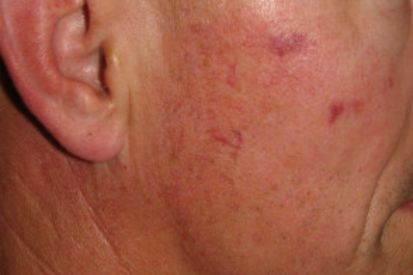
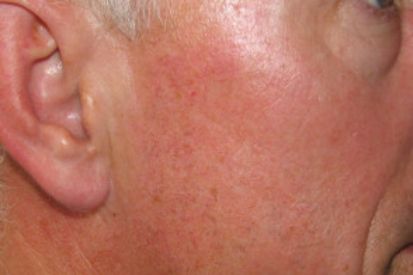
What are the Symptoms of a Birthmark?
- Can be flat or raised, exhibiting regular or irregular borders, and varying shades.
- Typically emerge at or shortly after birth.
- Some may have a reddish-purple appearance.
- Others may appera as light brown patches on the skin.
Causes of Birthmarks
- Birthmarks result from variations in the development of skin cells or blood vessels during fetal growth.
- Vascular birthmarks are caused by irregular blood vessel formation.
- Pigmented Birthmarks result from an overgrowth of pigment cells.
- The precise cause of these variations is not always clear, but genetic factors likely play a role.
Birthmark Prevention
Birthmarks may manifest hours, days, or even weeks after birth. They can occur in both male and female infants of any ethnicity. There are no established preventive measures for birthmarks; they are genetic, and certain individuals are predisposed to them.
Birthmark FAQs
Yes, birthmarks can indeed change or evolve over time, particularly during childhood. This is especially true for vascular birthmarks, such as hemangiomas, which can grow rapidly during the first year of life before gradually fading. Similarly, pigmented birthmarks, such as moles, may alter in color or size as the years pass.
While most changes in birthmarks are benign, it is important to monitor them for any sudden or significant changes. Vascular birthmarks might increase in size or change in texture, while pigmented birthmarks may darken, lighten, or grow. These transformations are usually harmless, but it is crucial to remain vigilant.
If you observe any abrupt or notable changes in a birthmark, such as a rapid increase in size, change in color, irregular borders, or the appearance of symptoms like itching or bleeding, it is essential to seek an evaluation from a dermatologist. Early assessment by a qualified dermatologist ensures that any potentially concerning developments are identified promptly, allowing for timely and appropriate intervention. Regular check-ups and monitoring are key to maintaining skin health and effectively managing the evolution of birthmarks.
The development of birthmarks can indeed have a genetic component. Certain types of birthmarks, such as café-au-lait spots or specific types of nevi (moles), may be influenced by hereditary factors, meaning they can run in families. However, the presence of a birthmark in one family member does not necessarily guarantee that other family members will have the same type of birthmark.
It is important to note that birthmarks can also appear spontaneously, without any familial history. This means that even if there is no known genetic predisposition, new birthmarks can still develop. The exact causes of birthmarks are not fully understood, and they can arise due to a variety of genetic and environmental factors.
Overall, while there is a potential for a hereditary link in the development of certain birthmarks, it is not an absolute determinant. Each individual case can vary, and birthmarks can occur both as inherited traits and as unique, spontaneous skin characteristics. If there are concerns about the nature or appearance of a birthmark, consulting with a dermatologist can provide valuable insights and guidance.
In many instances, birthmarks are benign and do not necessitate removal. However, there are situations where removal might be considered beneficial or necessary.
Cosmetic concerns are a common reason for seeking birthmark removal, especially if the birthmark is in a prominent location and affects an individual's self-esteem or confidence. Additionally, some birthmarks may cause physical discomfort, such as those that are raised and prone to irritation from clothing or friction.
In certain cases, removal is recommended due to medical concerns. For example, if a birthmark poses a risk of complications, such as the potential to develop into skin cancer, or if it shows signs of rapid growth, changes in color, or other unusual characteristics, a dermatologist may advise removal as a precautionary measure.
There are various methods available for birthmark removal, including laser therapy, surgical excision, and other dermatological procedures. The choice of method depends on the type, size, and location of the birthmark, as well as the individual's overall health and preferences.
It's important to consult with a qualified dermatologist to determine the most appropriate course of action. They can provide a thorough evaluation and recommend the best treatment options based on the specific circumstances, ensuring both safety and effectiveness in addressing birthmarks.
If you have numerous birthmarks, notice changes in their appearance, or have a personal or family history of skin cancer, it is wise to consider a total body skin exam by a dermatologist. This thorough examination is crucial for monitoring atypical or evolving birthmarks and helps in the early detection of potential skin issues, such as melanoma.
While self-examinations can be helpful, a professional skin exam offers a more comprehensive assessment and the benefit of expert insight. Dermatologists are trained to identify subtle changes and characteristics that might be missed during self-checks. This professional evaluation provides peace of mind and ensures that any concerning marks are properly evaluated and managed.
If you're unsure or worried about specific birthmarks, scheduling an appointment with our dermatologists for a comprehensive skin check is a proactive step toward maintaining good skin health. Regular skin exams can catch potential issues early, leading to better outcomes and effective management of any skin conditions. Taking this step not only ensures that your skin is thoroughly checked but also allows you to receive personalized advice and care tailored to your specific needs.
Absolutely, using sunscreen is highly recommended for birthmarks, particularly those that are sensitive to sunlight or exhibit changes in pigmentation. Birthmarks can vary widely in appearance and composition, and while some may not be significantly affected by sun exposure, others can become more prominent, darker, or susceptible to UV radiation damage.
Sunscreen plays a crucial role in protecting the skin from the harmful effects of ultraviolet (UV) rays, which can lead to skin damage, premature aging, and an increased risk of skin cancer. By applying sunscreen with a high SPF (Sun Protection Factor) to areas with birthmarks, you can help minimize these risks and protect the skin from potential sun-related harm. Regular use of sunscreen on birthmarks can prevent them from becoming more noticeable or experiencing adverse changes, ensuring they remain as healthy as the surrounding skin. Additionally, it's a good practice to incorporate other sun protection measures, such as wearing protective clothing and seeking shade, to provide comprehensive protection for your skin.
Total Body Skin Exams
Birthmark Treatments
Dermatologic treatments for birthmarks vary depending on the type and characteristics of the birthmark. Common approaches include laser therapy, which can target and lighten certain types of birthmarks like port-wine stains or hemangiomas by breaking down the blood vessels that cause discoloration. Surgical excision might be considered for smaller, raised birthmarks or those that pose health risks.
Schedule with one of our skin experts today to determine the best custom approach for your birthmark concerns.
Featured Blogs

- Skin Cancer
- Skin Exams
Skin cancer is the most common cancer in the U.S., affecting one in five Americans. When detected early, the five-year survival rate for melanoma, the most serious skin cancer, is 99%.
Read More
- Skin Cancer
- Sun Safety
The sun's ultraviolet (UV) radiation poses a significant risk. Discover ways to protect you and your loved ones from the sun and keep your skin healthy all year long.
Read More
- Skin Exams
- Skin Care
- Cosmetic Treatments
Resolve to take better care of your skin by implementing these simple skincare resolutions to help you have healthy, clear, beautiful skin all year.
Read MoreFeatured Products
Check your local office for current stock!
Check your local office for current stock!


